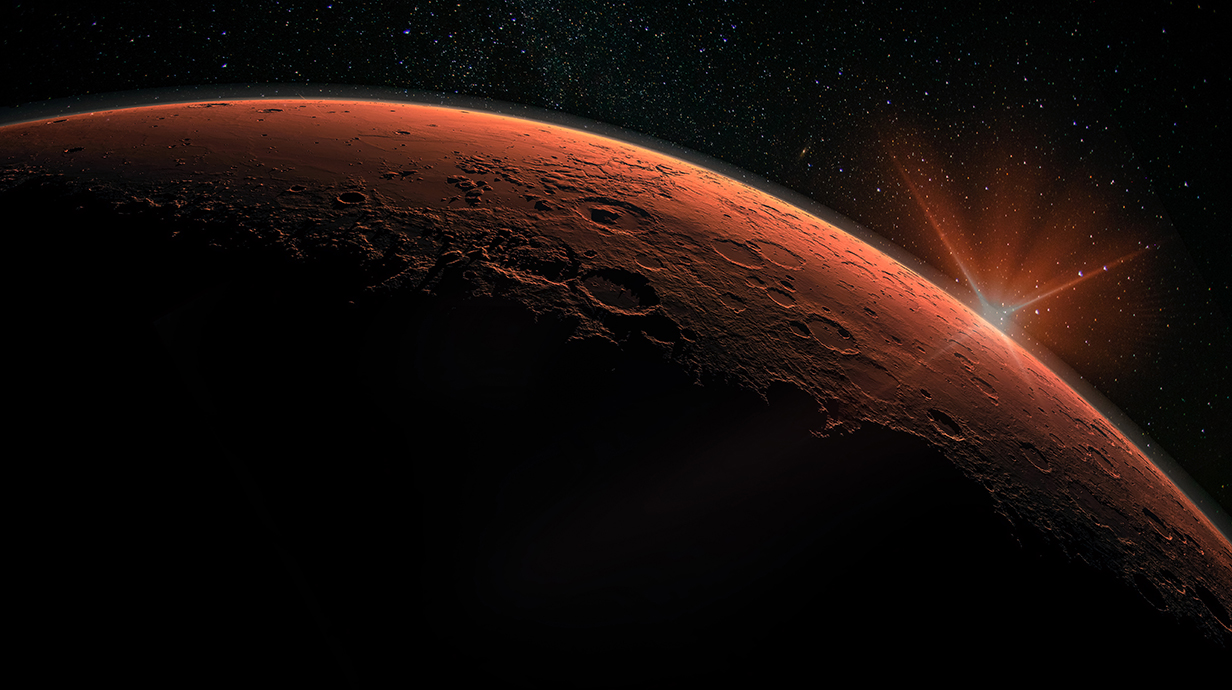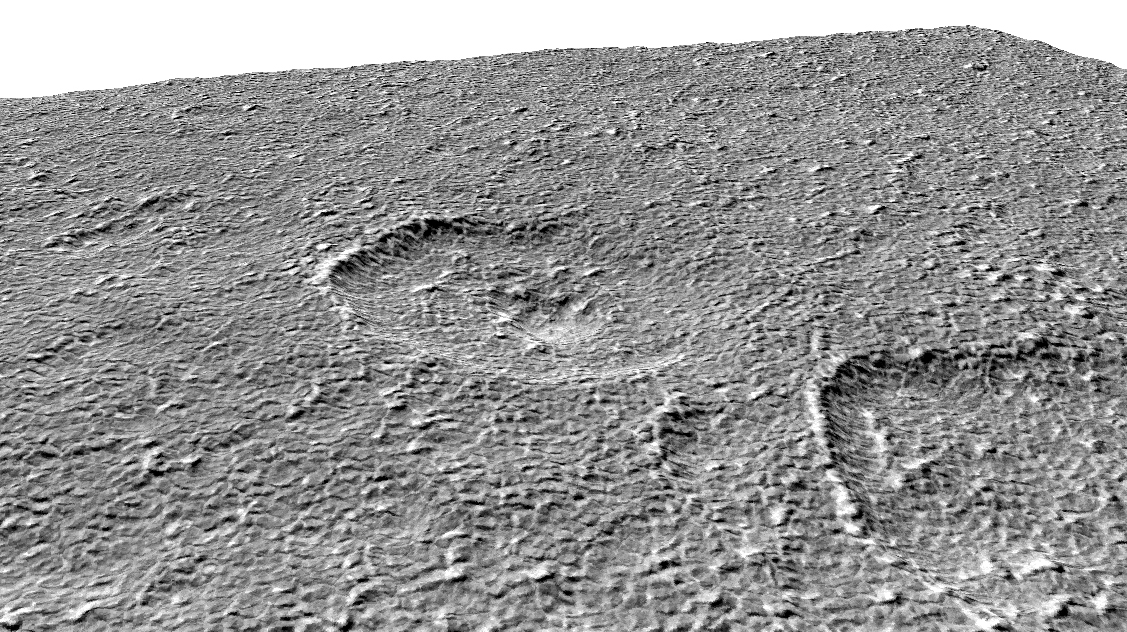Researchers Take One Small Step Toward Planning Life on Mars
Near-surface water ice could provide resources for human exploration on the Red Planet

OXFORD, Miss. – Before they take the long journey to another planet, humans will have to find the right place to land. New findings from a University of Mississippi researcher may point to just such a place on Mars.

Erica Luzzi, a planetary geologist and postdoctoral researcher in the Mississippi Mineral Resources Institute, recently led a research effort that discovered indications of near-surface water ice on the Red Planet. The finding, published in the Journal of Geophysical Research: Planets, provides a potential water source for future human exploration.
"If we're going to send humans to Mars, you need H2O and not just for drinking, but for propellant and all manner of applications," Luzzi said. She completed the research as a part of her postdoctoral studies at the Bay Area Environmental Research Institute within the NASA Ames Research Center.
"And finding it close to the surface is helpful because we can easily extract it and use it. This is called in situ resource utilization, and it's an important practice for any space exploration."
Using high-resolution orbital imagery, the team analyzed the Martian surface and found evidence of ice less than 1 meter below the planet's surface in the Amazonis Planitia region, located around the middle latitudes of the planet. The region is among the sites considered for future human missions.
"The mid-latitudes offer the perfect compromise – they get enough sunlight for power, but they're still cold enough to preserve ice near the surface," Luzzi said. "That makes them ideal for future landing sites."

Using satellite images from HiRISE, the highest resolution camera ever sent to another planet, the researchers identified ice-exposing craters, polygonal terrain and other morphologies that typically suggest ice near the surface.
Finding water ice means that human explorers would be able to use resources on the planet to provide drinking water, fuel, oxygen and other forms of life support.
"For the moon, it would take us one week, more or less, to go back and forth to Earth for resupply," said Giacomo Nodjoumi, postdoctoral researcher at the Space Science Data Center of the Italian Space Agency and a co-author of the study. "But for Mars, it would take months. So, we have to be prepared for not having resupply from Earth for extended periods of time.
"The most important resources are oxygen to breathe and water to drink. That's what makes our candidate landing site really promising."
Ice can also preserve indicators of life, both past and present, the researchers said.
"This also has astrobiological implications," Luzzi said. "On Earth, ice can preserve biomarkers of past life, and it can also host microbial populations. So, it could tell us if Mars was ever habitable."

This crater on Mars’ surface has been reshaped over time as underground ice turned directly into vapor, a process called sublimation. The softened edges, especially on the sun-facing slope, are strong evidence of ice just below the surface, according to Erica Luzzi, a planetary geologist and Ole Miss postdoctoral researcher. Submitted image
To get samples of the ice, humans would have to send a robot or exploration mission.
"The next step would be radar analyses to better understand the depth and patchiness of the ice," the Ole Miss researcher said. "The lag deposit, material on top of the ice, might vary, which affects whether the ice is preserved.
"Understanding that will help us decide where a robotic precursor should land."
A rover or human expedition is also necessary to determine whether the ice formations at these locations are purely water ice, or if they contain other materials.
"We will never be sure of something if we don't have a rover, a lander or a human to take real measurements," Nodjoumi said. "We have strong evidence to suggest that this is water ice, but until we go there and measure it, we won't be 100% sure."
Humans are still a long way from exploring the Red Planet on their own two feet, but the researchers' work shows where those first footsteps might land.
Top: Astronauts will need access to water when traveling and working on Mars. A study completed by a UM planetary geologist and several collaborators has identified regions near the Red Planet's middle latitudes that may have sizable deposits of water ice near the surface. Adobe Stock photo
By
Clara Turnage
Campus
Office, Department or Center
Published
June 18, 2025
